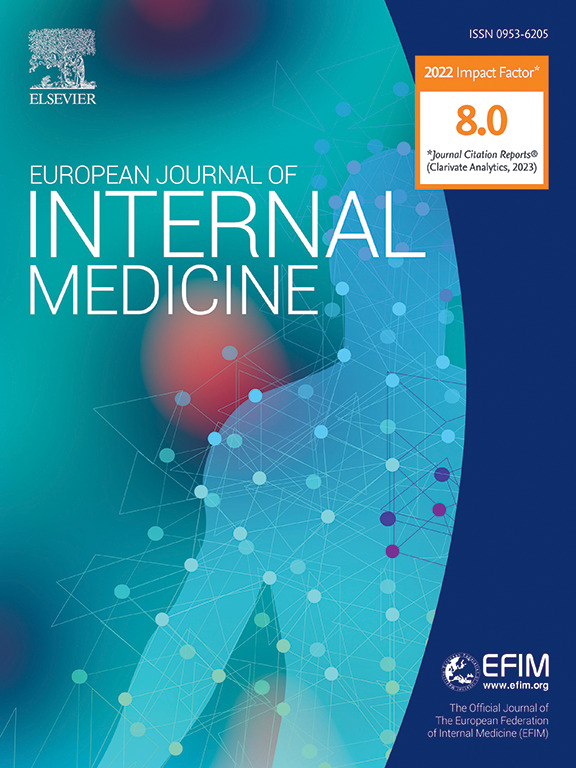Systolic blood pressure, a predictor of mortality and life expectancy following heart failure hospitalization, 2010–2023
IF 5.9
2区 医学
Q1 MEDICINE, GENERAL & INTERNAL
引用次数: 0
Abstract
Background
Optimal systolic blood pressure (SBP) targets for the treatment of hospitalized acute decompensated heart failure (ADHF) patients are not known.
Objectives
To investigate the association between SBP <130 mmHg at discharge or within 30 days and all-cause mortality or years of life lost (YLL) after ADHF hospitalization.
Methods
We analyzed medical records of 14,611 adults who survived ADHF hospitalization at 17 hospitals (2010–2022) with follow-up until May 2023. Sensitivity analysis included 10,515 patients with post-discharge SBP measured within 30 days.
Results
Mortality rates at 30 days, 180 days, 1 year, and 3 years were higher in patients with discharge SBP <130 mmHg (6.9 %, 21.1 %, 29.1 %, and 45.1 %) vs. SBP ≥130 mmHg (4.8 %, 16.0 %, 23.6 %, and 40.3 %). Hazard ratios (HR) for mortality were consistently higher in patients with discharge SBP <130 at 1.30 (95 % CI, 1.11–1.52), 1.45 (95 % CI, 1.33–1.58), 1.40 (95 % CI, 1.30–1.51), 1.31 (95 % CI, 1.23–1.38) at these intervals. The average YLL per deceased individual was 1–2 years greater in the discharge SBP <130 group (incidence rate ratios, 1.004 to 1.230). Restricted cubic spline analysis showed that HR for mortality shifted toward better outcomes at discharge SBP ≥130 Sensitivity analysis supported these findings.
Conclusion
In hospitalized ADHF patients, SBP <130 mmHg at discharge or within 30 days post-discharge was linked to higher mortality and YLL, while SBP ≥130 mmHg or improvement to ≥130 mmHg post-discharge led to better short and long-term outcomes. Further research is needed to understand the mechanisms and benefits of SBP optimization.

2010-2023 年心力衰竭住院后死亡率和预期寿命的预测指标--收缩压。
背景:治疗住院急性失代偿性心力衰竭(ADHF)患者的最佳收缩压(SBP)目标尚不明确:方法:我们分析了 14,611 名急性失代偿性心力衰竭(ADHF)患者的医疗记录:我们分析了 17 家医院(2010-2022 年)14,611 名急性失代偿性心力衰竭住院患者的医疗记录,这些患者的随访至 2023 年 5 月。敏感性分析包括出院后 30 天内测量 SBP 的 10,515 名患者:结果:出院 SBP 患者在 30 天、180 天、1 年和 3 年后的死亡率均较高:在住院的 ADHF 患者中,SBP
本文章由计算机程序翻译,如有差异,请以英文原文为准。
求助全文
约1分钟内获得全文
求助全文
来源期刊
CiteScore
9.60
自引率
6.20%
发文量
364
审稿时长
20 days
期刊介绍:
The European Journal of Internal Medicine serves as the official journal of the European Federation of Internal Medicine and is the primary scientific reference for European academic and non-academic internists. It is dedicated to advancing science and practice in internal medicine across Europe. The journal publishes original articles, editorials, reviews, internal medicine flashcards, and other relevant information in the field. Both translational medicine and clinical studies are emphasized. EJIM aspires to be a leading platform for excellent clinical studies, with a focus on enhancing the quality of healthcare in European hospitals.

 求助内容:
求助内容: 应助结果提醒方式:
应助结果提醒方式:


